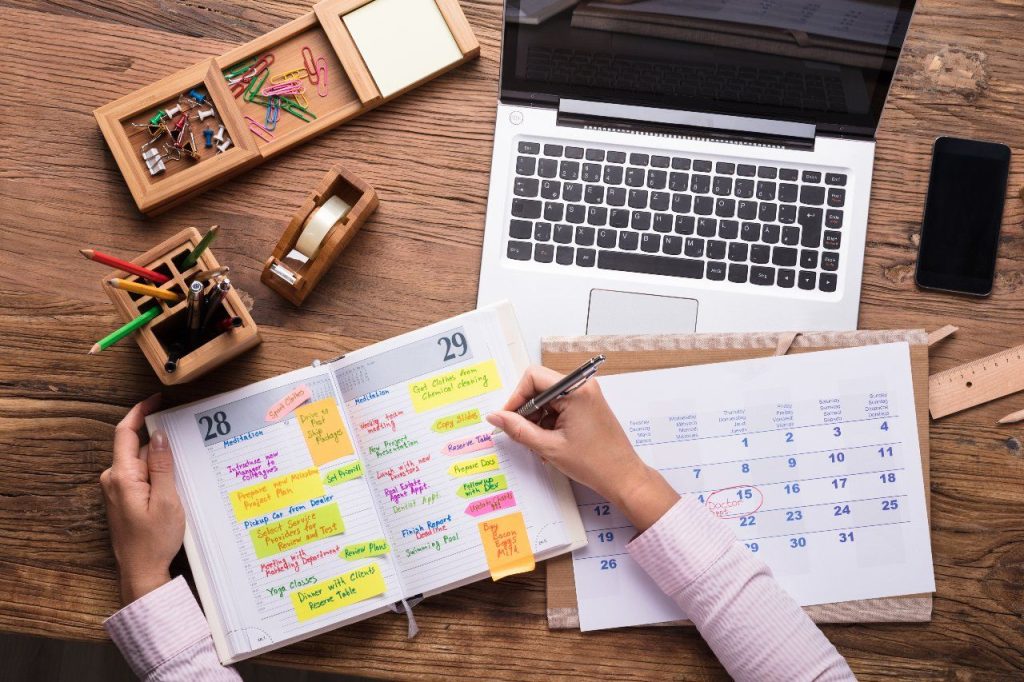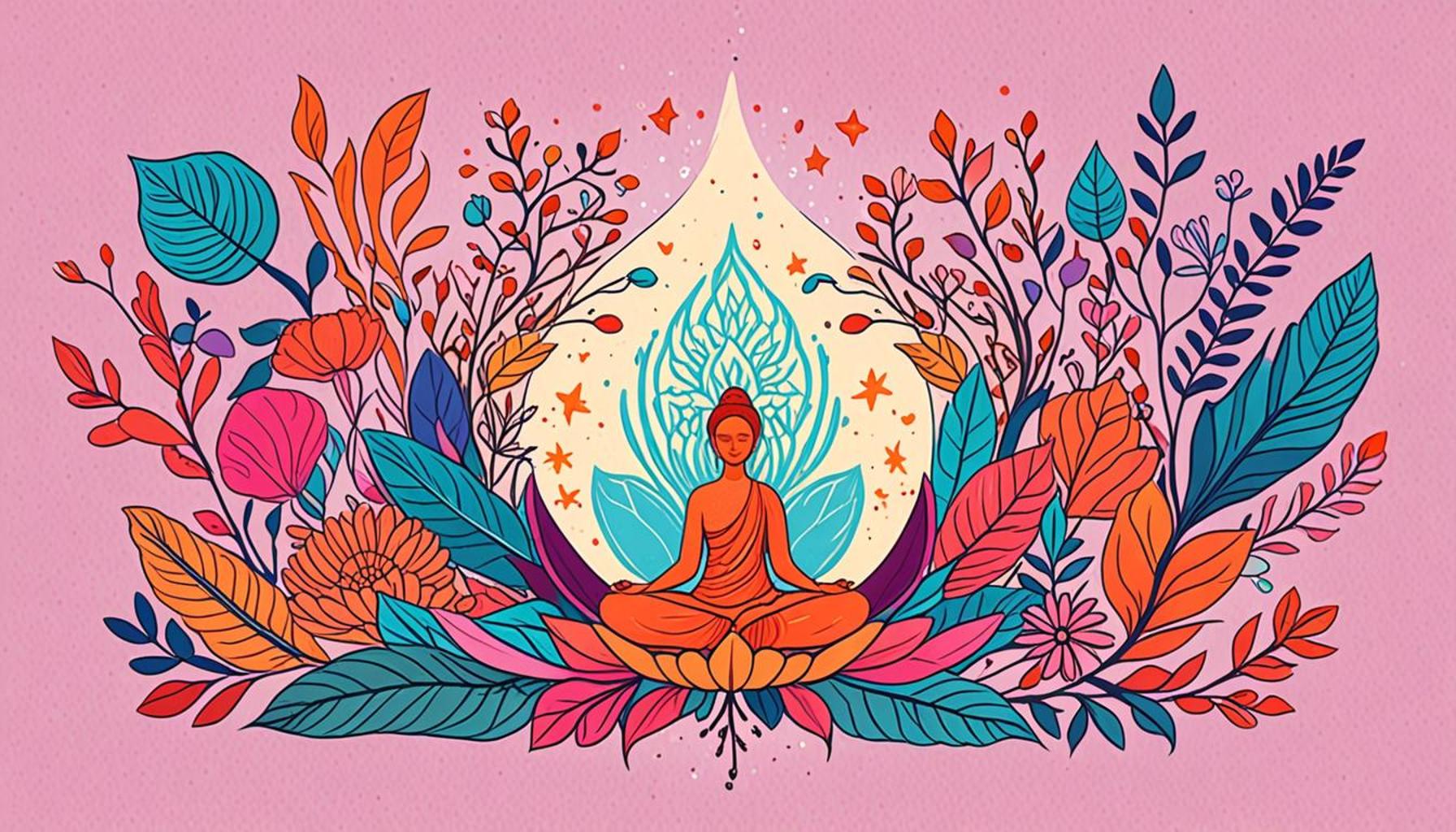Creating Mindfulness Routines to Increase Productivity in a Minimalist Environment

Unlocking Productivity Through Mindfulness
In a world filled with distractions, creating mindfulness routines has become essential for boosting productivity. The relentless pace of contemporary life often leads to overwhelming feelings and diminished focus. However, cultivating mindfulness within a minimalist environment not only declutters your physical space but also clears your mental landscape, enhancing both focus and efficiency. By integrating mindfulness into your daily regimen, you can transform both your workspace and work ethic, leading to greater success and satisfaction in your professional life.
The Benefits of Mindfulness in a Minimalist Setting
Mindfulness fosters awareness and presence—two key components that significantly enhance productivity. Here are a few key benefits:
- Enhanced concentration: Engaging in mindfulness practices helps to clear mental clutter, allowing the mind to focus on immediate tasks. Studies show that individuals who practice mindfulness report improved concentration levels, which in turn boosts overall productivity.
- Reduced stress: Creating a minimalist workspace with fewer distractions can lead to decreased anxiety levels. This reduction in stress not only enhances mental well-being but also promotes a healthy approach to work, enabling individuals to tackle challenges with a calm mind.
- Better decision-making: A calm and focused mind facilitates clearer thought processes. With reduced distractions, individuals can make better decisions, thus contributing to improved outcomes in both personal and professional scenarios.
Incorporating mindfulness routines in a minimalist environment can be both straightforward and rewarding. Consider simple yet effective practices such as:
- Daily meditation: Setting aside just a few minutes each morning for meditation can ground you for the day ahead, fostering a sense of peace and clarity. Numerous apps and resources are available to guide beginners through meditation practices, making it accessible to everyone.
- Mindful breaks: Taking brief, intentional breaks during the workday can boost creativity and productivity. Instead of scrolling through social media, step away from your desk and engage in a breathing exercise or a quick walk. Such pauses not only refresh your mind but can also spark innovative ideas.
- Gratitude journaling: Reflecting on daily experiences and jotting down what you are thankful for can significantly improve your mood and outlook. Studies suggest that maintaining a gratitude journal can lead to a more positive mindset, which is vital for sustained productivity.
These routines can help create a productive atmosphere that encourages deeper work and fosters creativity. As you delve into implementing mindfulness into your daily activities, you are likely to uncover a pathway to a more focused and efficient lifestyle. The intersection of mindfulness and minimalism offers not just an approach to work, but a holistic way to live, paving the way for long-term satisfaction and success.
DIVE DEEPER: Click here for more insights

Integrating Mindfulness into Daily Routines
Incorporating mindfulness into your daily routine can seem daunting at first, especially in a fast-paced environment where time is often seen as a precious commodity. However, creating mindfulness routines is not only about spending extended hours meditating; rather, it is about embedding focus and awareness into everyday activities. By establishing a series of mindful practices within a minimalist environment, individuals can cultivate a more productive life without overwhelming themselves.
Establishing a Mindful Morning Routine
The beginning of the day often sets the tone for productivity levels that follow. By integrating mindfulness techniques into your morning routine, you are likely to experience a more centered and engaged mindset throughout the day. Here are a few practical steps to get started:
- Wake up early: Allocating extra time in the morning can provide a quiet space for internal reflection. Waking up just 15-30 minutes earlier than your usual time allows for a less frantic start.
- Mindful movement: Engage in gentle stretching or yoga. This not only wakes up the body but also invites a sense of clarity and prepares the mind for the day’s challenges. Online platforms and local classes often offer guided sessions suitable for beginners.
- Intentional breathing: Practice deep breathing exercises to cultivate awareness and calm. As you inhale and exhale slowly, focus on the rhythm of your breath. This can be done anywhere, making it an accessible option for anyone seeking a moment of tranquility.
These small yet impactful changes create a foundation that encourages productivity throughout the day. When your morning begins with mindfulness, it enriches your overall experience and strengthens your ability to concentrate on tasks at hand.
Creating a Distraction-Free Workspace
The environment in which you work plays a vital role in your productivity. A minimalist environment minimizes distractions and promotes focus. Here are some strategies to create a more mindful workspace:
- Declutter your desk: Remove items that are not essential to your work. A clean and organized workspace has been shown to lead to better focus and less stress.
- Incorporate nature: Adding plants to your workspace can enhance mood and reduce anxiety. Research indicates that green spaces can boost creativity and cognitive function.
- Limit digital distractions: Use applications to block distracting websites during work hours. Establishing boundaries for technology usage fosters a more focused atmosphere.
As you create space for mindfulness alongside a minimalist environment, you’ll likely find the synergy enhances not only your productivity but also your creativity. With less clutter both physically and mentally, you can redirect your energy towards achieving your goals with intention.
| Category 1 | Category 2 |
|---|---|
| Mindfulness Practices | Incorporates meditation, deep breathing, and focused awareness to enhance mental clarity. |
| Enhanced Focus | Eliminates distractions typical in non-minimalist environments, allowing for deeper engagement in tasks. |
By implementing mindfulness practices in a minimalist setting, individuals can cultivate a deeper sense of awareness, contributing significantly to their productivity levels. The art of mindfulness encourages individuals to meditate and engage in deep breathing exercises, enabling them to clear their minds of clutter and focus on a single task at hand. Within a minimalist environment, where distractions are minimized, these practices shine even brighter, offering a foundation for increased efficiency.The shift to a minimalist setup not only declutters physical spaces but also promotes enhanced focus and minimizes the mental noise often associated with busier environments. Individuals often find that their creative energies are more easily harnessed when their surroundings are simple and serene. Through such a transformation, tasks that once felt overwhelming may become manageable, leading to a greater overall sense of accomplishment and satisfaction. Exploring these mindfulness routines could unveil transformative potential for anyone seeking to boost productivity within a serene and streamlined environment.
DISCOVER MORE: Click here to learn how to transition to a sustainable minimalist lifestyle
Incorporating Mindfulness Breaks Throughout the Workday
Once a mindful morning routine and a distraction-free workspace are established, it is equally essential to integrate mindfulness breaks throughout the workday. These short pauses can significantly enhance concentration and recharge mental energy, ultimately leading to increased productivity. Here are some effective strategies to incorporate mindfulness breaks:
Utilizing the Pomodoro Technique
The Pomodoro Technique, a popular time management method, encourages work sprints followed by short breaks. This technique is not only about managing time efficiently but can also serve as an opportunity to practice mindfulness:
- Work in intervals: Focus on a single task for 25 minutes, minimizing distractions. Use this time to fully immerse yourself in the task at hand.
- Take mindful breaks: After each 25-minute work session, take a 5-minute break. During this time, step away from your workstation, engage in intentional breathing, or do a brief body scan to enhance awareness of physical sensations.
- Reflect: After every four work intervals, take a longer 15-30 minute break. Use this opportunity to evaluate your performance, set intentions for the next work session, and engage in a more extended mindfulness practice, like a short walk or meditation.
Implementing the Pomodoro Technique not only boosts productivity but also acknowledges the importance of mental rejuvenation and mindfulness in a minimalist setting.
Incorporating Mindfulness into Daily Tasks
Mindfulness can be seamlessly integrated into routine activities you partake in every day, transforming them into opportunities for greater productivity. Here are some simple yet effective ways to accomplish this:
- Mindful eating: During lunch or snack breaks, focus solely on your food. Savor each bite, pay attention to flavors, and notice the textures. This practice helps clear your mind, enhances digestion, and promotes satisfaction with your meal.
- Mindful communication: When engaging in conversations with colleagues, practice active listening. Make it a point to fully concentrate on the speaker, noting both verbal and non-verbal cues. This not only improves interpersonal relationships but also fosters clearer communication.
- Mindful reflection: Take a few minutes at the end of each workday to reflect on what was accomplished. Acknowledge your achievements, assess what can improve, and set mindful intentions for the following day. Doing so helps maintain a clear focus and motivation.
By incorporating mindfulness into daily tasks, you cultivate greater awareness and reduce the likelihood of burnout, which is often prevalent in high-density work environments.
Creating Mindful Transitions
Transitions between tasks can often be sources of stress or distraction. Establishing mindful transitions can facilitate smoother changes from one task to another while enhancing productivity:
- Take a moment to pause: After finishing one task, take a brief moment to close your eyes and breathe deeply. This helps to signal to your brain that it’s time to shift gears and refocus.
- Use transitional rituals: Develop a short routine that you perform at every transition point. It could be as simple as stretching, drinking a glass of water, or writing down your next task. Such rituals can help set the stage for renewed focus.
Integrating mindful transitions into your day allows for more intentional work patterns, ultimately leading to a more productive atmosphere within your minimalist environment.
DIVE DEEPER: Click here to uncover more about intentional design and sustainability
Conclusion
In today’s fast-paced world, the integration of mindfulness into our daily routines stands out as a powerful approach to boost productivity, particularly within a minimalist environment. By implementing structured mindfulness practices, we can cultivate a workspace that not only minimizes distraction but also fosters deeper concentration and focus. Embracing techniques such as the Pomodoro Technique and mindful transitions allows for purposeful breaks, which are essential in maintaining mental clarity and enhancing overall work performance.
Moreover, incorporating mindfulness into routine tasks, from mindful eating to effective communication, transforms mundane activities into enriching experiences that elevate our work processes. This intentionality encourages not only greater productivity but also a greater sense of satisfaction and connection to our work. As we adapt to this mindful way of working, we not only seek to accomplish more but to do so with greater awareness and intention.
As we navigate the complexities of modern productivity, it becomes crucial to reflect on our routines and strive for minimalism. By recognizing the impact of mindfulness on our daily lives, we can create environments that promote both efficiency and well-being. This commitment to mindfulness will ultimately lead you to discover a more fulfilling and productive working experience while ensuring clarity and calmness amid the chaos of contemporary life. Thus, a mindful minimalist approach isn’t simply a trend; it is a transformative path to sustained productivity and fulfillment.


